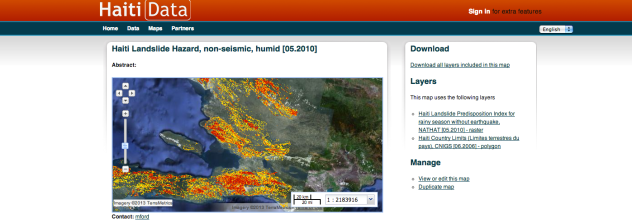 I came across the Open Data for Resilience Initiative, a global partnership that seeks to build data sharing programs along with the capacity and tools to use data to make more informed decisions, that is working on implementation in 25 countries. I came across it at work while I was looking for Haiti data, specifically in terms of Haiti-specific geo-spatial information, data and knowledge sources. The data can be used for many purposes: establishing baseline data, conducting risk assessments, planning, project monitoring, and tracking progress. This site is intended to facilitate more effective support to the country’s rehabilitation, recovery and longer- term sustainable development.
I came across the Open Data for Resilience Initiative, a global partnership that seeks to build data sharing programs along with the capacity and tools to use data to make more informed decisions, that is working on implementation in 25 countries. I came across it at work while I was looking for Haiti data, specifically in terms of Haiti-specific geo-spatial information, data and knowledge sources. The data can be used for many purposes: establishing baseline data, conducting risk assessments, planning, project monitoring, and tracking progress. This site is intended to facilitate more effective support to the country’s rehabilitation, recovery and longer- term sustainable development.
If you want to peruse through Haiti’s cartography collection; http://haitidata.org/maps/search

Reply